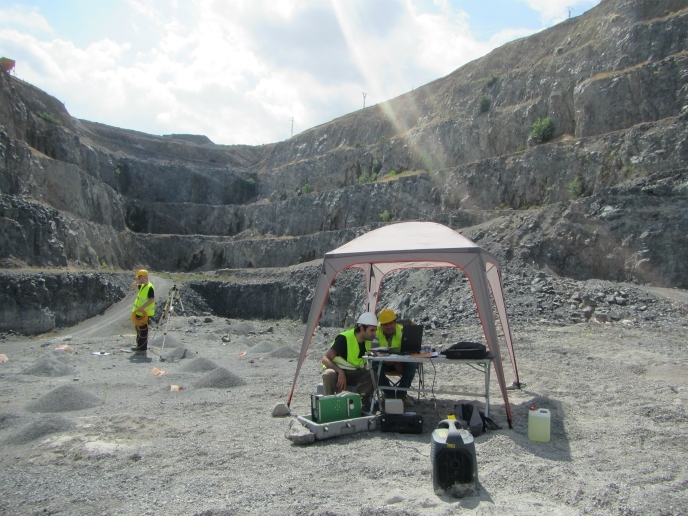3D and X-ray vision for sustainable mining
The European Union is facing the challenge of a high dependence on imports of raw materials which supports sectors that have combined value of in excess of EUR 1 000 billion and provide employment for some 30 million people(opens in new window). There is a need for better exploration methods to discover mineral resources within the EU and to make ore extraction in existing mining operations more efficient. This would make the mining of smaller and complex deposits economically feasible while increasing access to European mineral resources in an environmentally friendly way. The EU-funded X-MINE(opens in new window) project set out to demonstrate cutting-edge sensing technologies using X-ray fluorescence (XRF), X-ray transmission (XRT) and 3D vision technologies. The team has developed the X-Analyser, a drill core scanner, and the X-AnalySorter, a mobile sorter, for demonstration at mines in Sweden, Greece, Bulgaria and Cyprus.
Developing new technologies
Project partners developed several prototypes of 3D cameras, X-ray cameras and XRF spectrometers and tested them in pilot settings. They integrated their 3D vision and X-ray sensor technologies into a conventional mineral sorting technology and an X-ray drill core scanner. “The main deliverable of the project is the X-Mine online analysis platform, which includes the drill core analyser, the mineral sorting system and the 3D ore deposit modelling, all combined with the data fusion platform,” says project coordinator Janne Paaso. X-MINE researchers developed fast single-photon counting, multi-energy XRT camera prototypes, a new XRF spectrometer and a new 3D camera platform for mineral exploration and extraction applications. The team has also improved the existing 3D tomographic drill core scanning technology Orexplore(opens in new window) in many ways, including novel sensing technology, element and mineral analysis, and enhanced analysis software. They demonstrated the drill core scanner technology in mines in Greece and Sweden. “The integration of the drill core scanning data in 3D geomodels is ongoing, and the first results are really interesting and promising,” Paaso remarks.
Demonstrating X-AnalySorters
X-MINE developed two container-based mineral sorting systems they call X-AnalySorters. These were created based on conventional X-ray sensors with improved sorting algorithms. The team installed the first AnalySorter system at the Lovisagruvan mine in Sweden, testing it on many different use case scenarios. “When applying this sorting model to sortable fractions, about 25-27 % of the mass will be removed as waste rock and about 95 - 98 % of ore minerals (zinc and lead) will be retained for further processing, making possible significant reduction in energy use and carbon dioxide emissions,” Paaso notes.”
What’s next?
Project members developed their online analysis platform to be commercialised as products of companies such as Orexplore, Comex(opens in new window), Antmicro(opens in new window) and Advacam(opens in new window). “The academic institution partners of the project will use the innovative results of the project in research and development cooperation with mining companies and other end users in the future,” Paaso concludes.







